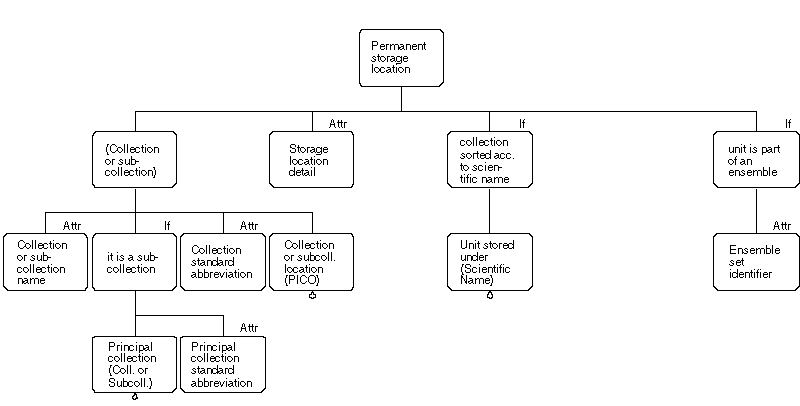
The name of a Collection or Subcollection housing a specific unit will often correspond to the name of a person, institute, company, or organization (PICO, see below). However, a specific subcollection may have to be cited (e.g. "Type Herbarium, Institute Scientifique de Rabat"). Such subcollection names are also instances of the entity Collection or Subcollection, the hierarchical structure being expressed by a recursion. Diagram 23 details the attributes of the entity.

Diagram 23: Storage location data
The unit's location within the collection is specified in attributes of the derived unit. The storage location detail is used for a specific storage site, e.g. the position of a sample in liquid nitrogen storage.
Unit storage is often organized according to taxon name, in which case, the unit stored under attribute should be used to form a link to a scientific name. The entry is obligatory when units are stored under a name differing from the determined one, e.g. in the case of mixed collections forming associated units or in the type material of synonyms.
An ensemble is a set of units which are usually handled together, because they are physically united (e.g. several lichens on a rock) or otherwise combined (e.g. a microscopic slide stored in a herbarium capsule). A unit object identifier from within the set is used as the ensemble set identifier which marks every member of the set. The position of a unit within an ensemble set, e.g. a separately accessioned herb on a herbarium sheet, is covered by the attribute additional curatorial identifier (Derived Unit).